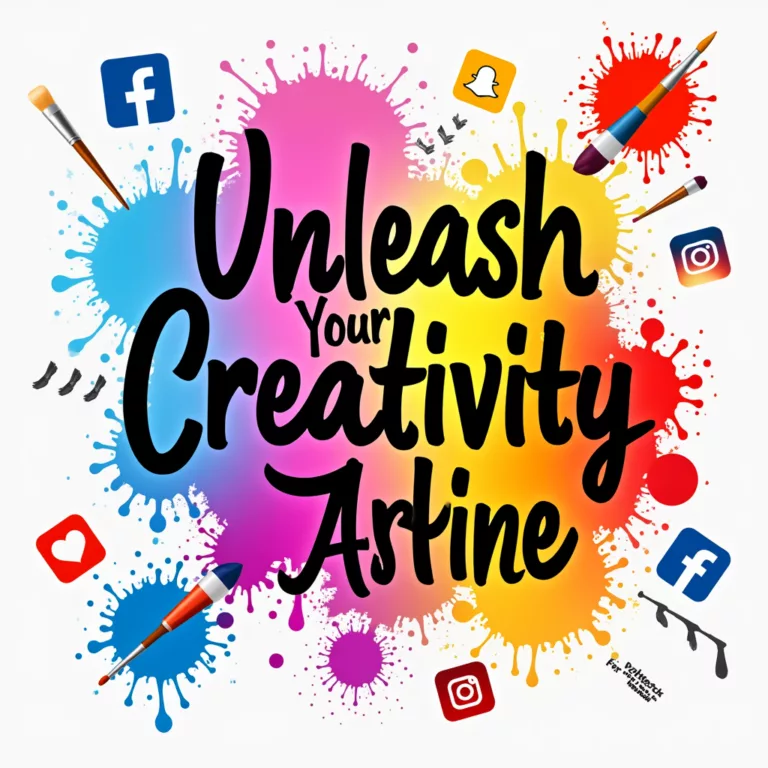Turn Your Art into Income
Art is more than just a form of self-expression; it can also be a profitable business. If you’re an artist looking to turn your passion into a sustainable income, you need a comprehensive strategy. This enhanced guide will walk you through proven ways to monetize your art, from selling original pieces to leveraging digital platforms, with practical tips for implementation.
1. Sell Your Original Artwork
One of the most traditional ways to make money as an artist is by selling original pieces. Here’s how to do it effectively:
Exhibit in Galleries
- Research Compatible Galleries: Find galleries that represent artists with similar styles or themes.
- Prepare a Professional Portfolio: Include high-quality images of your work, an artist statement, and a CV.
- Understand Gallery Agreements: Typical commission rates range from 40-60% of the sale price.
Participate in Art Fairs & Markets
- Start Local: Begin with community art fairs to build experience.
- Create an Eye-Catching Display: Invest in quality presentation materials.
- Offer Various Price Points: Have affordable items alongside premium pieces.
Sell Directly to Collectors
- Host Studio Open Days: Invite potential buyers to see your creative process.
- Create a Collector Database: Keep track of buyers and their preferences.
- Offer Collector Benefits: Provide early access to new collections or special pricing.
Pricing Strategy: Calculate your base price using materials + hourly rate × time spent + overhead costs. Then adjust based on market research and your career stage.
2. Offer Art Prints & Merchandise
Expand your reach by offering more affordable options:
Art Prints
- Giclée Prints: High-quality, archival prints that retain the look of original artwork.
- Open vs. Limited Editions: Decide whether to limit the number of prints to increase value.
- Print-on-Demand Services: Platforms like Printful, Redbubble, and Society6 handle production and shipping.
Art Merchandise
- Start with Popular Items: T-shirts, tote bags, mugs, and phone cases typically sell well.
- Quality Control: Order samples before offering products to ensure quality.
- Themed Collections: Create cohesive merchandise lines around specific artworks or themes.
Licensing Your Art
- Art Licensing Agreements: Allow companies to use your designs on their products for a fee.
- Royalty Payments: Typically 5-10% of wholesale price for each item sold.
- Retain Your Rights: Ensure agreements are non-exclusive unless compensated accordingly.
3. Teach Art Online or In-Person
Share your knowledge and skills:
In-Person Teaching
- Local Workshops: Partner with art centers, schools, or community spaces.
- Retreat Programs: Host immersive art experiences over multiple days.
- Corporate Team Building: Offer creative workshops for businesses.
Online Education
- Create Course Content: Develop structured lessons with clear learning outcomes.
- Platform Options: Skillshare, Udemy, and Teachable offer different revenue models.
- Promotional Strategy: Create free sample content to attract students.
Private Instruction
- Specialized Techniques: Focus on your unique strengths and methods.
- Package Deals: Offer discounts for multiple lesson commitments.
- Virtual Options: Use video conferencing for global reach.
4. Sell Your Art Online
Leverage digital platforms to reach a worldwide audience:
Art Marketplaces
- Etsy: Ideal for handmade items and prints (20 cents listing fee + 6.5% transaction fee).
- Saatchi Art: For fine art with a global audience (35% commission).
- Artfinder: Curated marketplace for original art (40% commission).
Social Media Sales
- Instagram Shopping: Set up a shop directly on your profile.
- Facebook Marketplace: Good for local sales with reduced shipping concerns.
- TikTok Shop: Emerging platform for reaching younger collectors.
Your Own Website
- E-commerce Options: Shopify, Squarespace, or WooCommerce.
- Search Engine Optimization: Use art-related keywords to improve visibility.
- Email Marketing: Build a mailing list to announce new works and special offers.
5. Take Art Commissions
Create custom artwork for clients:
Setting Up a Commission Business
- Clear Pricing Structure: Base rates plus additional fees for complexity or rush orders.
- Detailed Contracts: Include payment terms, revision policies, and usage rights.
- Process Documentation: Create a step-by-step guide for clients to understand your workflow.
Types of Commissions
- Personal Commissions: Portraits, pet portraits, home illustrations.
- Commercial Commissions: Book covers, album art, logo design.
- Public Art: Murals, sculptures, and installation pieces.
Managing Client Expectations
- Approval Stages: Get sign-off at key points in the creation process.
- Deposit System: Require 50% upfront and 50% upon completion.
- Testimonials: Collect and display positive feedback to attract new clients.
6. Monetize Your Social Media Presence
Build and leverage your online following:
Content Creation
- Behind-the-Scenes: Share your creative process and studio life.
- Time-Lapse Videos: Show the evolution of a piece from start to finish.
- Art Challenges: Participate in or create trending art challenges.
Revenue Streams
- Platform Monetization: YouTube Partner Program, Instagram Reels bonuses.
- Brand Partnerships: Collaborate with art supply companies or related brands.
- Live Streaming: Platforms like Twitch allow for donations during art creation streams.
Building Community
- Consistent Posting Schedule: Maintain regular engagement with followers.
- Interactive Content: Polls, Q&As, and requests for input on works in progress.
- Hashtag Strategy: Research relevant tags to expand your reach.
7. Crowdfunding & Art Subscriptions
Create sustainable income through community support:
Subscription Models
- Patreon Tiers: Offer escalating benefits at different price points.
- Subscription Boxes: Monthly art packages with original items.
- Membership Sites: Exclusive content, tutorials, and community access.
Crowdfunding Projects
- Project-Based Campaigns: Kickstarter or Indiegogo for specific collections or books.
- Ongoing Support: Ko-fi or Buy Me a Coffee for flexible funding.
- Rewards Strategy: Offer compelling incentives at various contribution levels.
8. Digital Art & NFTs
Explore digital art marketplaces:
Digital Art Sales
- Digital Downloads: Sell wallpapers, printables, or digital brushes.
- Print-Ready Files: High-resolution artwork for buyers to print themselves.
- NFT Marketplaces: OpenSea, Foundation, or Rarible for blockchain-based sales.
Creating for Digital Platforms
- Adapt Your Style: Consider how your art translates to digital viewing.
- Authentication Methods: Use digital signatures or certificates of authenticity.
- Royalty Structures: Set up smart contracts for secondary sales percentages.
9. Art Services & Consulting
Offer your expertise:
Art-Related Services
- Art Curation: Organize exhibitions or select artwork for spaces.
- Portfolio Reviews: Provide feedback for emerging artists.
- Art Buying Consultation: Help collectors find pieces that match their taste.
Business Consulting
- Artist Career Coaching: Guide other artists in professional development.
- Art Marketing Services: Help artists promote their work effectively.
- Grant Writing Assistance: Support artists in securing funding.
10. Diversify Your Income Streams
The most successful artists combine multiple approaches:
Strategic Combinations
- Seasonal Focus: Emphasize different income streams throughout the year.
- Complementary Methods: Use social media to drive traffic to your online store.
- Passive + Active Income: Balance time-intensive activities with more passive revenue.
Financial Management
- Separate Business Account: Keep art income and expenses separate.
- Tax Planning: Understand deductions available to professional artists.
- Retirement Planning: Set aside a percentage of income for long-term security.
Conclusion: Building a Sustainable Art Business
Turning your art into a reliable income requires creativity, persistence, and strategic business planning. Start with the methods that best align with your art style and personality, then gradually expand. Remember that building a sustainable art business takes time—focus on creating value for your audience while staying true to your artistic vision.
Most importantly, continue to develop your skills and evolve your art. The stronger your work becomes, the more opportunities will open up for monetization.
What monetization strategies are you most excited to try? Share your experiences and questions in the comments below!
Art11deco.







